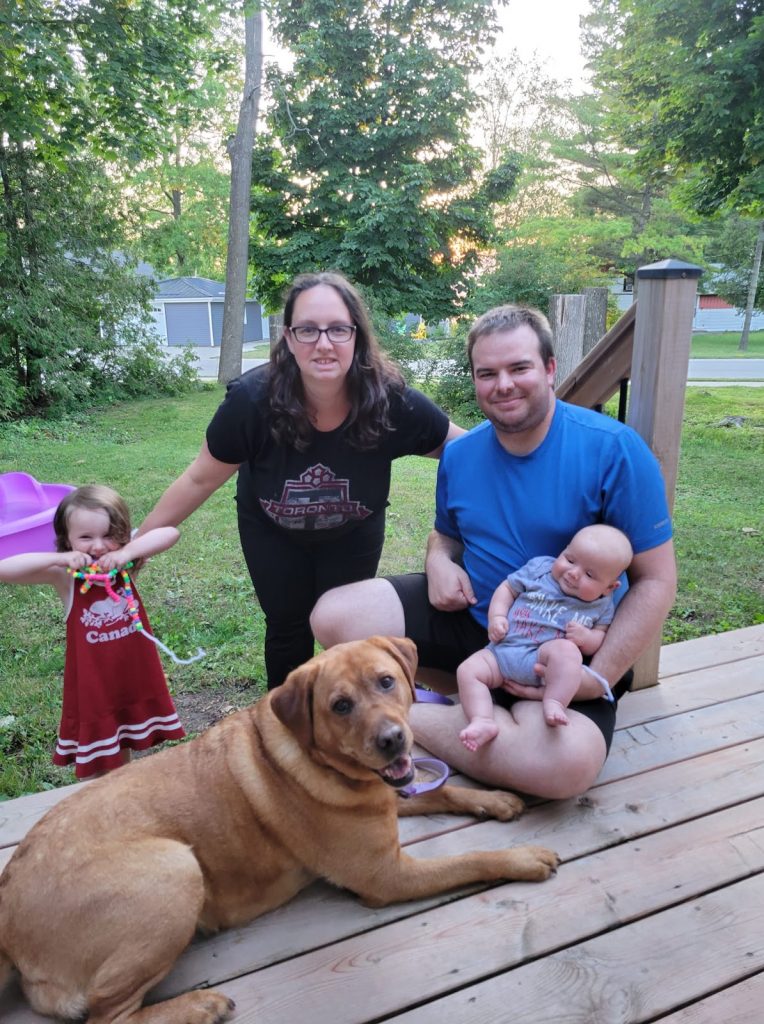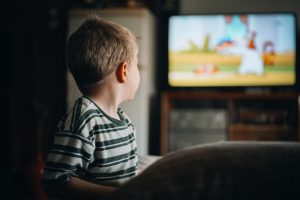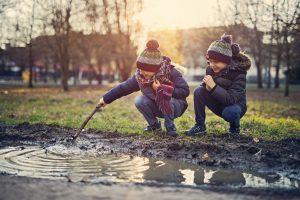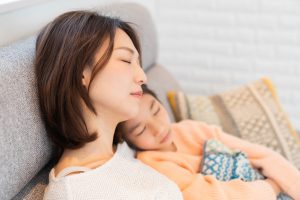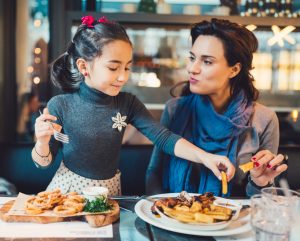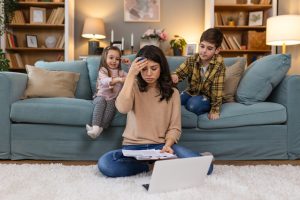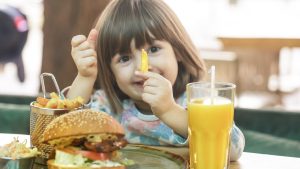Covid-19 in Babies & Kids: My Family’s Experience
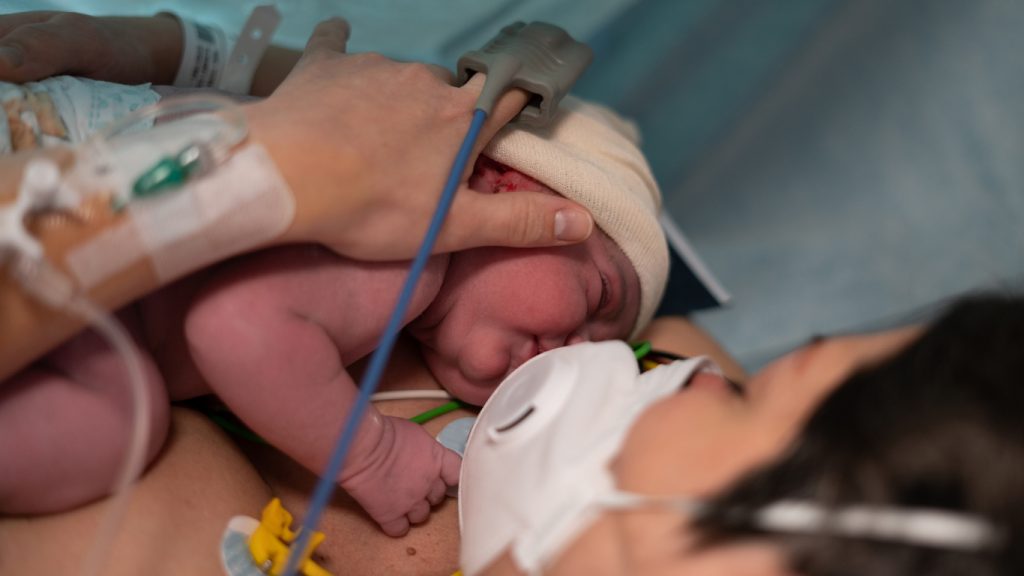
Having a baby during a pandemic is an experience on its own and there’s even been a term coined: “quarantine baby.” However, I define experiencing the coronavirus as a family with a newborn as a chaotic whirlwind. My husband and I took the pandemic very seriously and were following all public health guidelines, especially since I was pregnant. However, our adventure with Covid-19 in babies and kids began just three days after coming from the hospital after delivering our son in late March 2021.
Delivering a Baby During a Pandemic
It was the morning of March 24th, 2021 and we headed to our local hospital. I was having contractions and our baby boy was ready to enter the world. Having a baby in a pandemic took a little more preparation than simply having a baby. For starters, it was the height of Wave 3 and there were 1731 cases in Ontario, so it was not easy to find someone to watch our daughter. Everyone worried about Covid exposure. Luckily, my parents were willing to take the risk.
We arrived at the hospital; we had been told beforehand that I would have to enter on my own and that my husband wouldn’t be allowed in until I was declared as “active labour.” I had to wear my mask while entering the hospital, and my first stop was the screening station. I was in labour; it was quite an experience trying to answer the screening questions between contractions. I won’t go into too much detail but, we wore masks the entire time we were in the hospital – about 36 hours between labour plus a 24-hour stay after our baby boy was born. We packed snacks to try to avoid the cafeteria as much as possible. However, we did have to visit for our major meals.
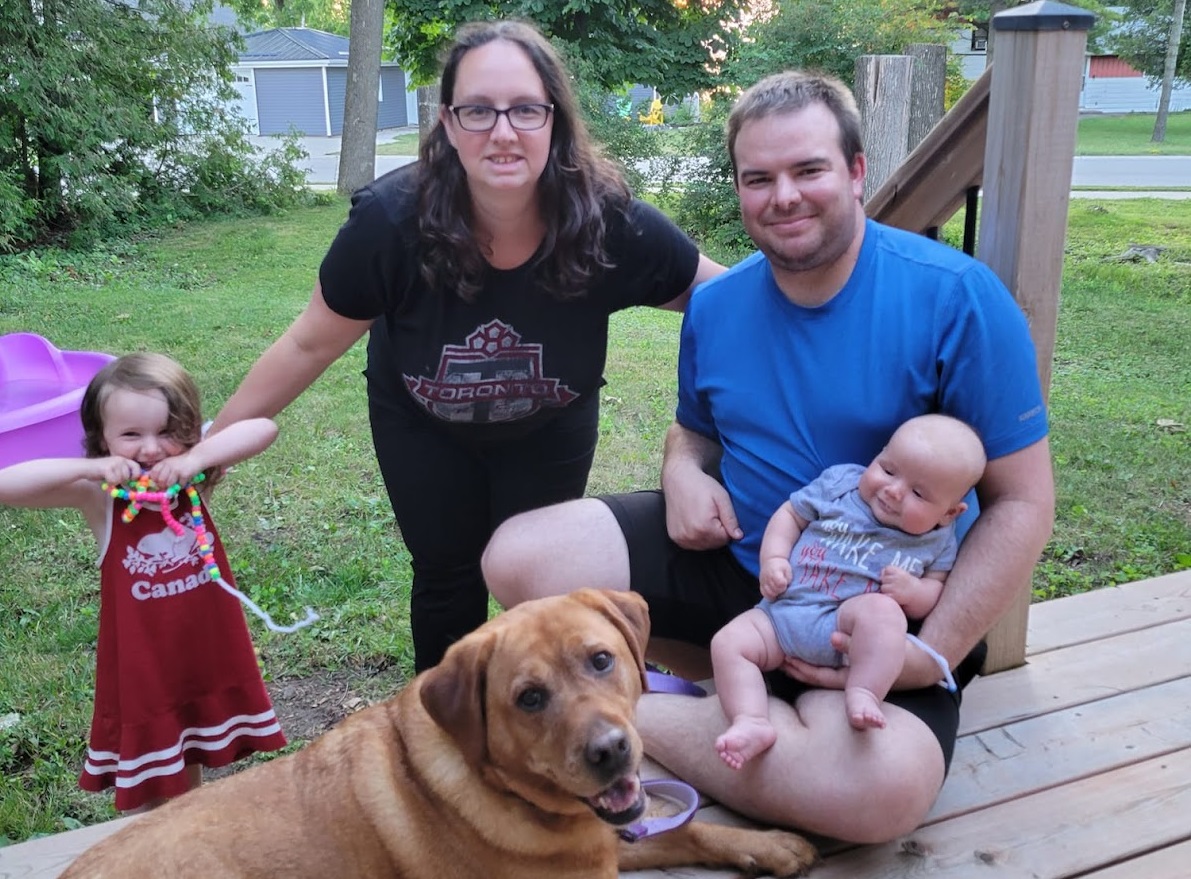
My Family’s Covid-19 Experience
We left the hospital on a Thursday evening and headed home to adjust to being a family of four. It seemed like the usual transition until I noticed on the Friday morning that I had a cough when we picked up our daughter from my parents. I didn’t think much of it, but this was the first symptom that started it all – so we think. By Friday afternoon I woke up from a nap feeling terrible and headed to the ER to be checked out. They did a Covid test as a precaution. It came back negative so we figured we were in the clear.
Unfortunately, on the Sunday morning my husband woke up with a fever and some serious stomach pains and headed to the ER himself. The doctors suggested a stomach issue and did some tests but suggested a Covid test just in case. Just six hours later, at midnight, we found ourselves looking at the word “POSITIVE” across the computer screen. My husband and I were sitting on separate couches and looked at each other and said, “Now, what?!”
After calling Telehealth for advice and being told it was a six-hour wait, we decided the best option was for my husband to self-isolate upstairs where he had a bedroom and bathroom to himself. This seemed like a solid plan until the reality set in that I was four days postpartum and would be sleeping on the couch, parenting a three-year-old and a three-day-old on my own for 14 days as our whole household was now under isolation.
The next day was emotionally upsetting and stressful. My family couldn’t come to help as they would be risking their health. After countless calls with Public Health it was advised that my daughter and I be tested, though they wouldn’t test my son as he was only a few days old.
I began wearing masks around my family at all times to protect them and my husband stayed upstairs. I also was washing my hands multiple times a day to the point that they became raw. It was super hard to manage a preschooler and a new baby and was emotionally upsetting; I wasn’t even sure if I should be snuggling my new baby boy for fear of passing on Covid to him. My husband missed most of the first two weeks of our son’s life and had to rely on photos and Facetime videos.
Positive is Negative Dealing with
Covid-19 in Babies & Young Children
Just two days after my test, my worst reality came true. I also tested “POSITIVE.” However, my daughter was “NEGATIVE” and my son was not showing symptoms. We now both had Covid-19 and I had to try to manage my symptoms of chills, exhaustion, cough, and headache while parenting two young children. After countless phone calls with Public Health, we were told that after 10 days my husband and I were out of isolation but both kids would have to isolate 14 days from their last exposure with us. So, at this point, we were looking at a minimum of 24 days of isolation at home.
Long story short, the first day after my isolation was over and despite no symptoms, I took my daughter for another Covid test and unfortunately she tested “POSITIVE.” A few days later my son started to seem congested and was having minor trouble breathing. I had a hard time deciding if this was Covid-19 or just how babies sometimes breathe slightly irregularly. I decided to be cautious and take him into the ER to be checked. The nurses were great and the doctor was also very good. They checked all vitals and said he was ok and gave me some tips on what to look for in terms of difficulty breathing. They still said they would not test babies for Covid-19 which was so frustrating. Five days later he seemed worse. After talking to my midwife, they suggested another ER visit so this time we went to a bigger hospital (the one he was born at). Our local hospital said that if he needed to be admitted they couldn’t take him so I was better off going to a bigger hospital in the first place.
Unfortunately, the only hospital accepting pediatric patients that week was The Hospital for Sick Children in Toronto, which was over an hour’s drive away. After a second ER visit and refusing to leave without a Covid test, my son tested positive for Covid-19 at 16 days old.
Our entire isolation lasted from March 27, 2021 until April 20, 2021 (my husband’s birthday). After 24 days of isolation, we celebrated with a family walk around the block and back to our own home. None of us left the entire time other than for hospital visits and Covid tests.
Thankfully, after four Emergency Room visits between all of us and 24 days of isolation, we all recovered. I had a lingering cough for a few extra weeks.
What Are the Signs & Symptoms of
Covid-19 in Babies & Kids?
Now this is a tricky question as the symptoms keep changing regularly. They also say that Covid is not common in children and even rarer in newborns and yet, both of my kids tested positive. My three-year-old had absolutely no symptoms and was totally asymptomatic. My newborn had a congested nose, sneezing, grunting, and minor difficulties breathing.
According to the Government of Canada the more commonly reported Covid-19 symptoms in children include:
- New or worsening cough
- Shortness of breath or difficulty breathing
- Temperature equal to or over 38°C
- Feeling feverish
- Chills
- Fatigue or weakness
- Muscle or body aches
- New loss of smell or taste
- Headache
- Gastrointestinal symptoms (abdominal pain, diarrhea, vomiting)
- Feeling very unwell
- Skin changes
Luckily, most children handle Covid-19 fairly well and we have seen limited deaths of children in Canada.
How Can I Keep My Family Safe if My
Child Has Covid-19 Symptoms?
These are the tips I received from Public Health, and my own research. I did all of the following. However, Covid-19 is so easily spread that my household of four all tested positive despite our best efforts.
- Wear a medical grade mask around your kids at all times. Take it off only to eat or drink and sit away from them if possible. (I ate meals at our kitchen table and would leave both kids safely in the living room which is within eyesight and a few metres away.)
- Wash your hands frequently.
- Teach your kids to cough into their elbow and wash their hands frequently with soap and water. We watched some videos together and sang songs about hand washing.
- Practice physical distancing – ideally two metres. I tried to do this as much as possible by sitting on separate couches from my daughter, but she is three and required close contact.
- Clean and disinfect frequently-touched objects and surfaces. I cleaned all high-touch surfaces with disinfectant wipes multiple times a day and tried to avoid touching all of my daughters toys.
- Avoid touching your face (eyes, nose, and mouth) and teach your kids the same.
How can I talk to my child
about Covid-19?
Trying to explain to a three-year-old why her Daddy was isolated and couldn’t play for over two weeks was one of the hardest parts of our experience dealing with Covid-19 in babies and kids. How much you explain to your kids will depend on their age and developmental level.
The following are things we did to build our daughter’s resilience:
- We reassured her that many doctors, nurses, and scientific experts are there to help us. We explained the Covid-19 test to our three-year-old that the nurse was going to tickle her nose and then she would get a sticker. She has become a professional and doesn’t even cry now as she has had more than five tests since the pandemic started.
- I regularly checked my daughter’s temperature to watch for symptoms. I told her that I was scanning her brain and would respond “Super Smart!” every time. She found this fun.
- Children are observant and pick up on emotions. Despite my anxiety, I tried to stay very calm around her and just explained that daddy was sick but would be better soon.
- We taught her that we could blow kisses instead of actual kisses, and air high fives to avoid contact as much as possible.
- Since she is only three we never fully explained what Covid-19 is. However, with older kids you could definitely use a Social Story to teach about Covid-19.
